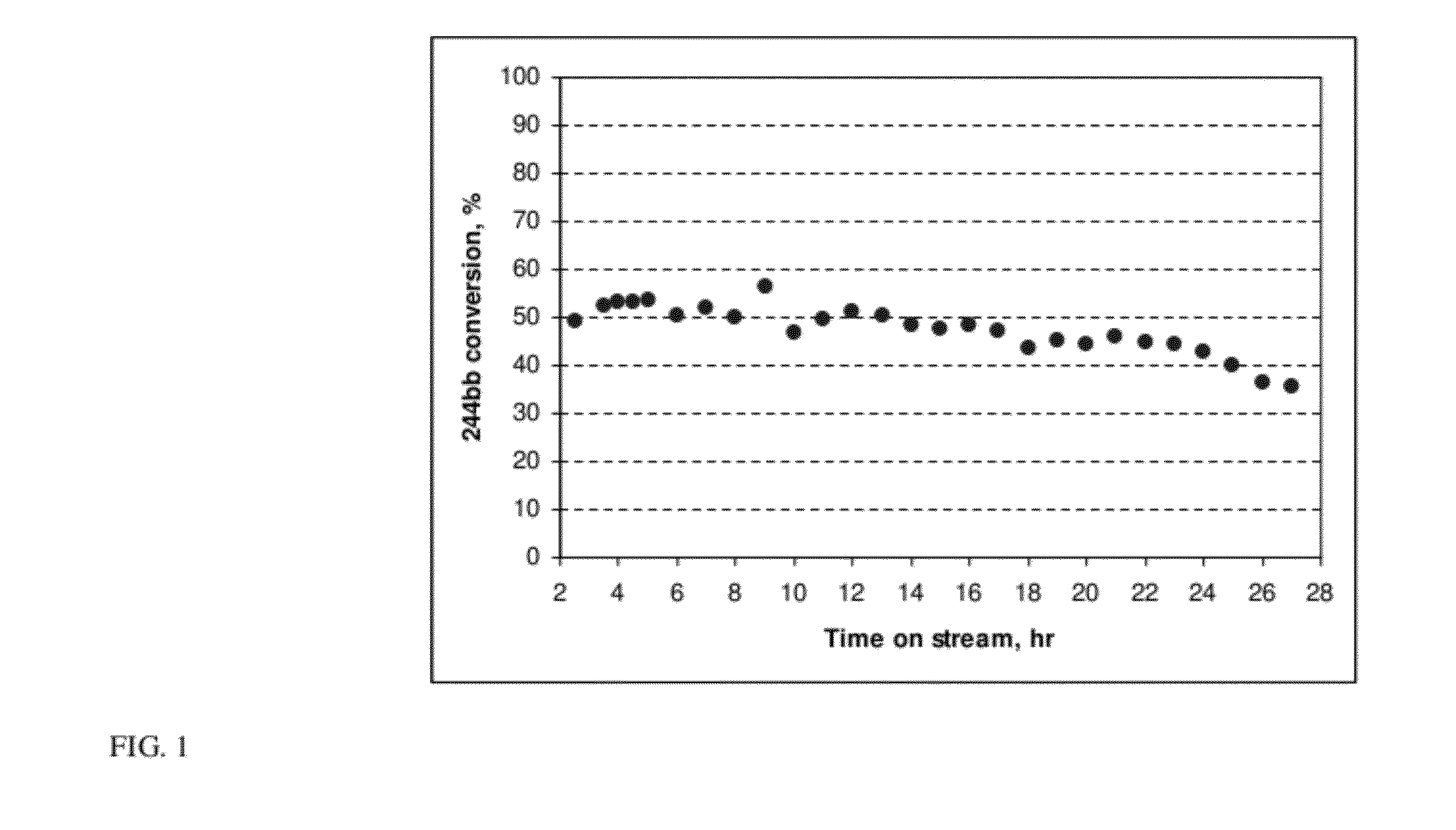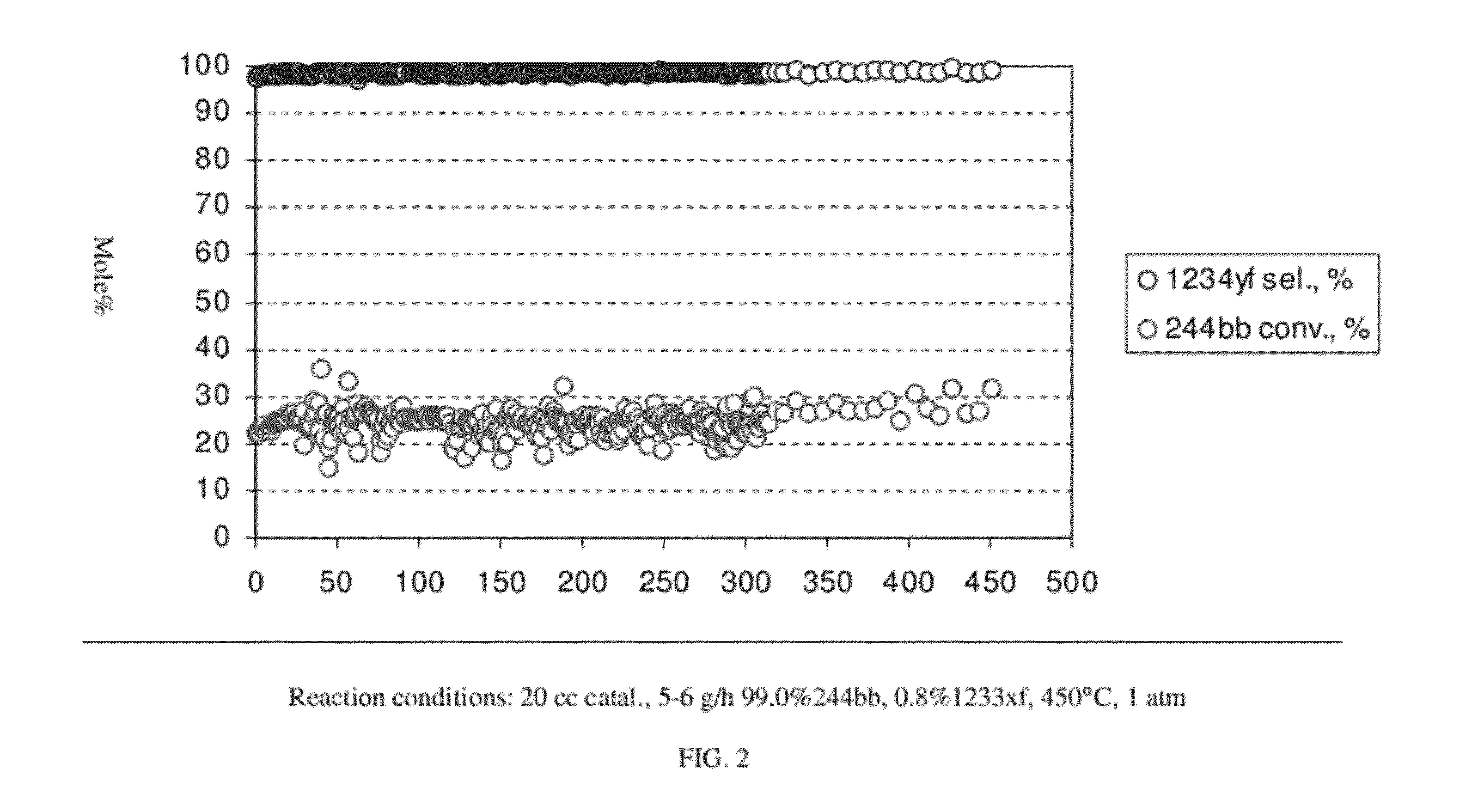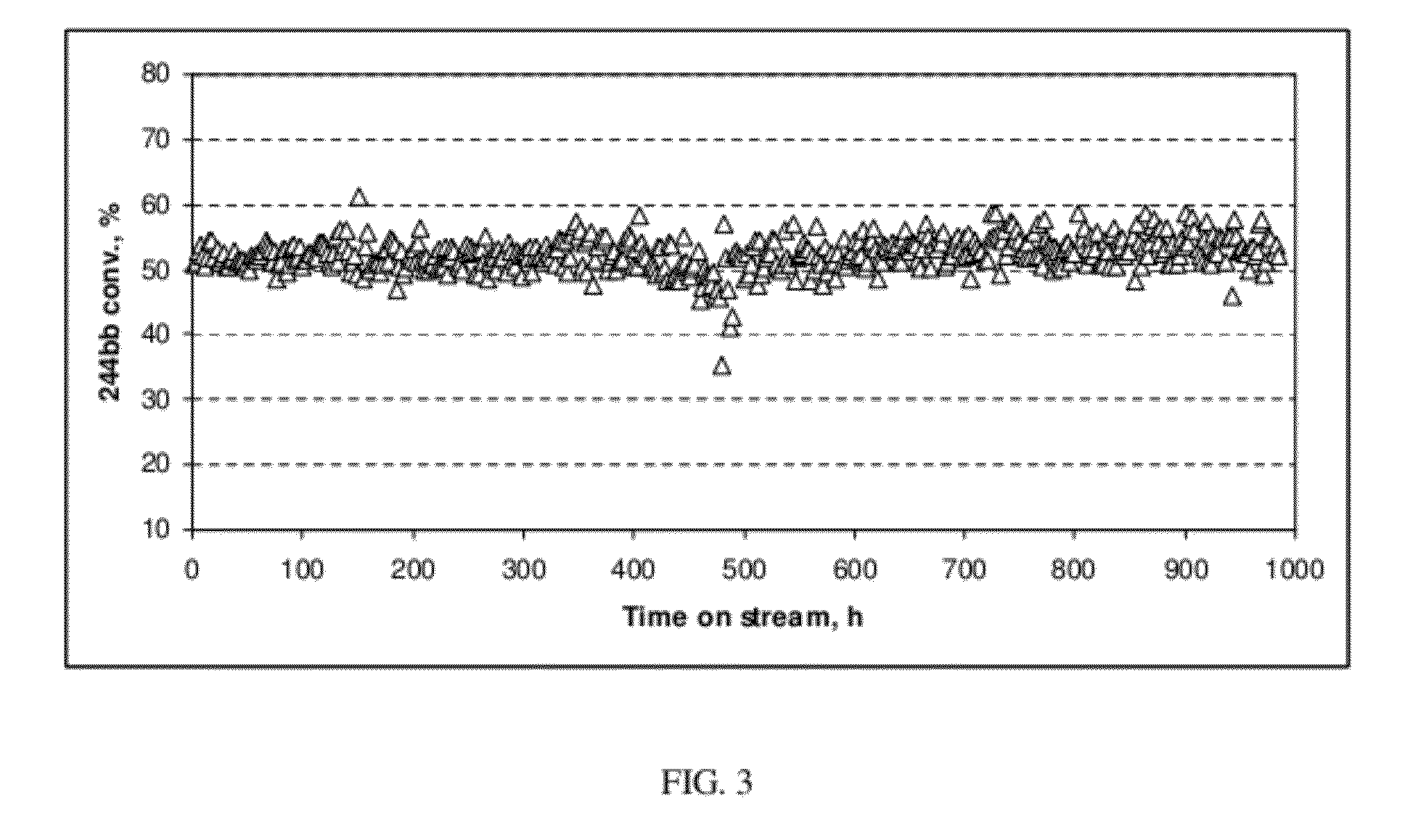Process for producing 2,3,3,3-tetrafluoropropene
- Summary
- Abstract
- Description
- Claims
- Application Information
AI Technical Summary
Benefits of technology
Problems solved by technology
Method used
Image
Examples
example 1
[0053]This example illustrates the continuous liquid phase fluorination reaction of 2-chloro-3,3,3-trifluoropropene (HCFO-1233xf)+HF→2-chloro-1,1,1,2-tetrafluoropropane (HCFC-244bb). The fluorination catalyst for the experiment was SbCl5.
[0054]About 5618 grams of SbCl5 were contained in a Teflon™-lined liquid phase reactor equipped with a 2-inch ID (inside diameter) packed column and a condenser. The reactor was 2.75-inch ID×36-inch L (length). Initially, a greater than 5:1 mole ratio of HF was added to the reactor to fluorinate the catalyst. A greater than 3:1 mole ratio of Cl2 was then added to the reactor to ensure that the catalyst was brought back to a pentavalent state. The reactor was heated to about 85° C.-87° C. HF feed was started first. When an additional 1.5 lbs of HF had been added the 2-chloro-3,3,3-trifluoropropene feed was started. The purity of the 2-chloro-3,3,3-trifluoropropene feed stock was about 97.3 GC (gas chromatograph) area %. The experiment ran continuousl...
example 2
[0057]This example illustrates the difficulty in obtaining high purity 244bb using a conventional batch distillation column
[0058]The crude HCFC-244bb produced in a reaction run similar to that described in Example 1 was continuously fed into a caustic scrubber to remove unreacted HF and HCl by-product (formed during impurity formation). Then the product stream was passed through a column filled with desiccant to remove residual moisture and collected. 100 lbs of this material was charged to a distillation column consisting of a 10 gallon reboiler, 2 inch ID by 10 foot column packed with ¼″ Propak packing, and a shell and tube heat exchanger for a condenser. The column had about 30 theoretical plates. The distillation column was equipped with temperature, pressure, and differential pressure transmitters. The distillation was run at 27 psig pressure and D / P in the range of 13-15 inches of H2O. The composition of the material charged to the distillation column was 3.85 GC area % HFC-24...
example 3
[0059]The 99.25 GC area % HCFC-244bb recovered in Example 2 was used as feed to a reactor containing a dehydrochlorination catalyst. The reaction was highly selective to HFO-1234yf and a crude HFO-1234yf product that contained <1.0 GC area % impurities other than unconverted HCFC-244bb was produced. Using relatively pure HCFC-244bb as a feed to the dehydrochlorination reaction also improved dehydrochlorination catalyst stability. Catalyst stability was constant for over 1000 hours of continuous run time as compared to <500 hours using unpurified 244bb feed.
PUM
| Property | Measurement | Unit |
|---|---|---|
| Temperature | aaaaa | aaaaa |
| Temperature | aaaaa | aaaaa |
| Temperature | aaaaa | aaaaa |
Abstract
Description
Claims
Application Information
 Login to View More
Login to View More - R&D
- Intellectual Property
- Life Sciences
- Materials
- Tech Scout
- Unparalleled Data Quality
- Higher Quality Content
- 60% Fewer Hallucinations
Browse by: Latest US Patents, China's latest patents, Technical Efficacy Thesaurus, Application Domain, Technology Topic, Popular Technical Reports.
© 2025 PatSnap. All rights reserved.Legal|Privacy policy|Modern Slavery Act Transparency Statement|Sitemap|About US| Contact US: help@patsnap.com



